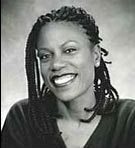Leilani Henry is an Educational Kinesiologist and pioneer in bringing innovative whole brain strategies to personal, professional and organizational transformation. In addition to running her own business, and being an artisan, Leilani is a member of the North American Thrivable Network.
Todd Hoskins: You’ve said thrivability involves embracing the dangerous parts of ourselves and our world. What does that mean?
Leilani Henry: It is difficult to acknowledge that we are afraid. So many things are the opposite of what they seem to be. For example, letting go of control to allow things to emerge gives you a different type of control. Admitting we are not perfectly strong makes us stronger. To be vulnerable could feel dangerous, but opens up new possibilities.
There is a dot of yin in the yang, and yang in the yin. There is a bit of safety in the danger, and danger in the safety. We need to reframe danger.
Todd: In an organizational setting, what are the dangers we need to embrace?
Leilani: Risk is often the danger because we are oriented towards security. How much risk are we willing to take? Are we willing to shake up our relationships with stockholders or customers for long term benefit? What will we do for the greater good?
Risk is evaluated on the continuum between opportunity and danger. The flow stops if you don’t take any risks. If it is an opportunity, there may be danger involved. We learn through mistakes and failure, so a thriving organization does not play it totally safe. Think fragile balance!
We contract because of fear, both as individuals and organizations. How do we train our talent, engage in our market, make investments, and expand when everyone else is contracting?
This is an essential part of thriving – to expand within contraction.
Brain cells are not given the chance to work in contraction. We can either be creative as a choice point, or be fearful and submit to fight or flight, locking up our brain cells.
Brain cells are a metaphor for the organization. Employees have ideas and want to change things, but if fear and contraction are ruling the organization, the brain cells will not be activated. A thriving organization must be able to open and trust its people, just like a person must be able to open to the contraction and trust his or her brain cells .
Todd: What are we learning about the brain?
Leilani: The brain has plasticity. It used to be believed there were a finite number of brain cells. This is not true. We continue to learn, change, and grow.
Habits create ruts in your brain. In order to change a habit, you have to create a new neural pathway. That requires the body, and new research suggests movement helps forge these paths.
We need to be moving more often, even if it is only stretching or doing neck rolls in your chair. This is not just for the good of your body, but also facilitates brain activity.
The brain likes sensory stimulation. Kaleidoscopes are loved not just because they are pretty, but because they enliven the mind. Smells, colors, tastes – all rejuvenate brain cells.
Todd: You talk about “embodying change.” How does change move through the body?
Leilani: We often freeze in situations of fear. We stop breathing. We contract physically. We have a choice to move into expansion with curiosity. To breathe consciously and move consciously is to encounter the possibilities of change in new ways. We can move toward the object of our fear and explore it. Or we can back away with a neutral stance.
By allowing the body to move and be aware of our inner state, new possibilities can emerge. We release stress in our muscles. We see our situation from a new perspective. We learn from our body, and our bodies help us learn.
I use movement in workshops. People often respond with varied combinations of joy and resistance. It can be a polarizing experience. I’ve learned to integrate it more effectively. Organizations need to think about how they can breathe and move as well. It’s not just the people who contract. An entire organization can contract as well.
Todd: Anything else?
Leilani: For change to be moving freely we need to move consciously more often.
